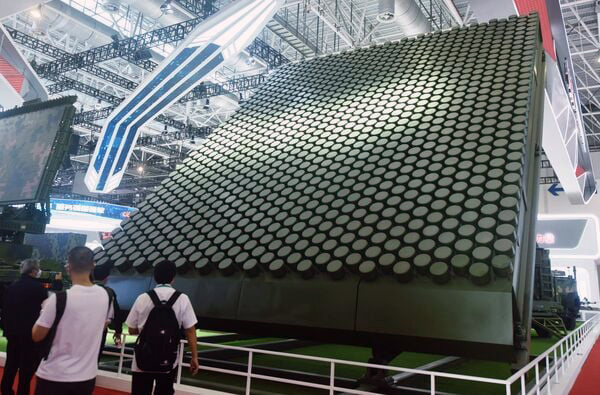China appears to be considering equipping Pakistan with its cutting-edge SLC-18 space surveillance active phased array radar, which would downsize the Indian military’s dominance over Islamabad.
The radar was displayed for the first time at the China International Aviation and Aerospace Exhibition in Zhuhai (Guangdong), which concluded on November 13. The ten-meter-tall SLC-18 radar is said to be particularly successful in detecting and tracking multiple Low Earth Orbit (LEO) satellites in all conditions.
LEO satellites are located anywhere from 200 kilometers to 2,000 kilometers above the Earth’s surface. These satellites are used primarily for data collection and military surveillance and have steadily evolved into critical equipment for powerful countries seeking remote intelligence.
LEO satellites can carry out intense, 360-degree, and all-factor hotspot surveillance thanks to their powerful capability, small size, and flexible orbits. China’s new radar is capable of monitoring such satellites.
The SLC-18 was developed by the state-owned China Electronics Technology Group Corporation (CETC), which also manufactures electronic systems and components, missiles, radars, and other weapons for the People’s Liberation Army (PLA).
Sun Lei, CETC deputy general manager, said, “This radar will allow friendly countries to locate targets in space.” The statement hints at China’s desire to provide Pakistan with a radar system.
The system provides capabilities for situational awareness against low-orbiting satellites to balance the tactical stance. This radar is substantially less expensive than others in its class, adding an affordability factor for Pakistan.
It is important to note that India is a significant space power with a diverse array of satellites in orbit. This enables New Delhi to monitor Islamabad’s every action. However, with the SLC-18 radar, Pakistan could detect where the Indian satellites are.
China and Pakistan have close ties, referring to one another as “iron brothers” and “all-weather allies” in their bilateral declarations. China is Pakistan’s top supplier of military equipment, including aircraft, missiles, and warships.
Islamabad is also crucial to China’s ambitious Belt and Road Initiative. Highlighting that point, Sun emphasized that the SLC-18 radar’s situational awareness against LEO satellites and competitively priced ground-based space target monitoring can help the Belt and Road Initiative.
In the five years between 2017 and 2021, according to data from the Swedish research tank SIPRI, which contains information on weapon transfers, Pakistan imported 72% of its total weapons from China, and it was also the end recipient of 47% of all of China’s major arms exports.
In addition, China has armed Pakistan with its HQ 9/P HIMADS (High to Medium Air Defense System), which was inducted into the Pakistan Army Air Defense in October 2021.
With a single-shot kill probability, the HQ 9 can intercept various air targets, such as aircraft, cruise missiles, and weapons, beyond the optical range of more than 100 kilometers.
SLC-18 Radar Capabilities
The SLC-18 radar, a P-band solid-state active phased array radar, is primarily used to detect space targets. It can track and measure several objects while searching for and capturing LEO satellites and other space targets.
Sun told the Global Times that the SLC-18 radar could identify and catalog satellites to create a radar database, which may be used to direct other equipment to respond accordingly.
This development also alters the traditional practices of developing nations purchasing satellite data from developed countries, which may be compromised and very expensive because they lack the necessary space-based resources and platforms.
The SLC-18 can detect satellites from a distance and relay satellite data to the command center to help make decisions. It has wide-area detection capability, allowing it to instantly record a satellite’s orbit and enter it into a database. Based on the orbit parameters, it can immediately assess whether it is a new satellite type and its primary usage.
Sun pointed out that the radar has essential advantages such as all-weather, all-time, multi-target, immense power, and extensive search areas, which can identify LEO targets in various airspace and cover many LEO satellite targets.
He added that the radar is entirely built in China, from chip production to manufacturing. It also uses a modular design to extend its capabilities as needed. This suggests that China’s radar development has advanced to a new level.

















